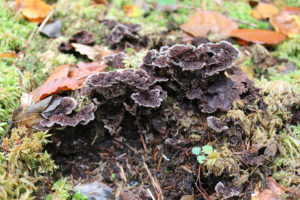
Fungal Genomes on MycoCosm portal


By comparing 135 fungal sequenced genomes, researchers were able to carry out a broader analysis than had ever been done before to look at how multiple forest fungi have independently evolved to establish symbiotic relationships with plants (mycorrhizae), and particularly how fungi that feed on decaying plant matter (saprotrophs) have transitioned to the symbiotic lifestyle.
The analysis enables researchers to understand how plants and fungi developed symbiotic relationships, and how the mutualistic associations allow host plants, such as candidate bioenergy feedstock crops, to acquire nutrients. Additionally, these results validate how mycorrhizal fungi play an integral role in soil carbon storage.

There are three types of fungal saprotrophs in the forest. White rot can break down the cellulose, hemicellulose, and lignin in plant cell walls, while brown rot cannot break down the lignin but use cellulose. Finally, there are soil saprotrophs, which degrade plant detritus. Despite the different modes of nutrition, many of these soil fungi have independently evolved ectomycorrhizal (form symbiotic relationships outside of the root cells) lineages. To learn why, researchers analyzed 135 fungal genomes representing major fungal families, including those for which there were previously no genomes of symbiotic species available: 73 saprotrophs and 62 mycorrhizal species. The 62 mycorrhizal species include 29 newly-sequenced mycorrhizal genomes. With so many fungal genomes, the team conducted a large-scale comparison, charting several changes caused by the lifestyle change. For example, the number of plant cell wall-degrading enzymes such as ligninases and cellulases were much lower in ectomycorrhizal fungi compared to white rot fungi. Additionally, some of the saprotrophic genes found in the mycorrhizal species, such as nutrient transporters, were co-opted into symbiotic functions.
Recently published in Nature Communications, the work was led by a consortium of researchers from the French National Institute for Agriculture, Food and Environment (INRAE), Hungary’s Biological Research Centre, Clark University, and the U.S. Department of Energy (DOE) Joint Genome Institute (JGI), a DOE Office of Science User Facility located at Lawrence Berkeley National Laboratory (Berkeley Lab). All of the fungal genomes used in the study are available on the JGI fungal portal MycoCosm.
The work builds upon several papers and workshops, starting with the first mycorrhizal genome sequence generated by the JGI more than a decade ago. Having these datasets will assist researchers in moving toward functional genomics studies to learn more about the inner workings of plant-host and mycorrhizal-fungal interactions.

